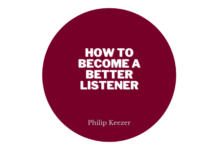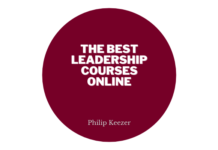In today’s rapidly evolving business landscape, product design and innovation are the driving forces that propel companies towards success. Entrepreneurs striving to make their mark understand that a well-designed product can capture markets, disrupt industries, and create lasting customer loyalty. However, the journey from concept to a successful product launch is fraught with challenges. To ensure that their product design efforts are effective and resonate with customers, entrepreneurs must adopt a strategic approach that aligns creativity with market needs.
Philip Keezer asks what leads to great product design, and how to make sure your business is doing it right.
Understanding Customer Needs
The foundation of successful product design lies in understanding customer needs and pain points. Entrepreneurs must delve into thorough market research to gain insights into the target audience. Surveys, interviews, and data analytics can provide invaluable information about what customers truly desire. This involves not only identifying their immediate requirements but also anticipating their future needs.
Iterative Design Process
Product design is rarely a linear process. Entrepreneurs should embrace an iterative approach that involves continuous refinement and adaptation. This means incorporating feedback from potential users, beta testers, and industry experts. By remaining open to constructive criticism and incorporating changes throughout the design journey, entrepreneurs can create products that consistently improve and resonate more effectively with customers.
Design Thinking Methodology
The design thinking methodology is a powerful tool for entrepreneurs aiming to develop products that genuinely meet customer needs. This human-centered approach encourages a deep understanding of user experiences and perspectives. It involves five key stages: empathize, define, ideate, prototype, and test. By immersing themselves in the user’s world, entrepreneurs can gain invaluable insights that lead to more user-focused and empathetic product designs.
Cross-Disciplinary Collaboration
Innovation thrives when diverse minds come together. Entrepreneurs should cultivate cross-disciplinary collaboration within their teams. Engineers, designers, marketers, and psychologists all bring unique perspectives that can enrich the product design process. By fostering an environment where various disciplines interact, entrepreneurs can ensure that their products are not only functional but also aesthetically pleasing, user-friendly, and emotionally resonant.
Prioritizing User Experience (UX)
A successful product is one that seamlessly integrates into users’ lives, providing them with a positive and memorable experience. Entrepreneurs must prioritize user experience (UX) design by focusing on intuitive interfaces, smooth interactions, and clear communication. UX design considers not only functionality but also emotional engagement, ensuring that customers not only use the product but also enjoy the process.
Staying Ahead with Technology
Innovation often rides on the back of technological advancements. Entrepreneurs must stay informed about emerging technologies relevant to their industry and product. Whether it’s artificial intelligence, Internet of Things, or blockchain, incorporating cutting-edge technology can provide a competitive edge. However, it’s essential to balance the integration of technology with genuine customer needs, ensuring that innovation enhances rather than detracts from the user experience.
Agile Development Practices
The business landscape is ever-changing, and entrepreneurs need to be adaptable to stay competitive. Agile development practices, borrowed from software development, can be incredibly effective in product design. This approach emphasizes flexibility, collaboration, and iterative development. By breaking down the design process into manageable sprints, entrepreneurs can respond quickly to market changes and continuously refine their products to meet evolving customer needs.
Testing and Validation
No matter how confident entrepreneurs are in their product design, thorough testing and validation are essential. Beta testing with a select group of users can provide real-world insights into the product’s performance and usability. The data gathered from these tests can inform final refinements before a full-scale launch. Additionally, entrepreneurs should be willing to pivot if the testing phase reveals significant shortcomings or unmet needs.
Learning from Failures
In the pursuit of innovation, failures are not setbacks but opportunities to learn and grow. Entrepreneurs must not shy away from trying new ideas, even if they don’t always lead to success. Each failure provides invaluable lessons that can shape future product design endeavors. A culture that embraces failure as a stepping stone towards improvement encourages creativity and risk-taking.
Continuous Improvement Post-Launch
Product design doesn’t end at launch; it’s an ongoing process. Entrepreneurs should gather feedback from customers and track key performance metrics post-launch. This data-driven approach allows for continuous improvement and ensures that the product evolves in line with changing customer needs and market dynamics.
In conclusion, product design and innovation are pivotal elements in the entrepreneurial journey. By understanding customer needs, embracing iterative processes, fostering collaboration, prioritizing user experience, and staying informed about emerging technologies, entrepreneurs can create products that genuinely resonate with their target audience. The key lies in combining creativity with market insights to develop solutions that not only meet current needs but also anticipate future ones. As the business landscape continues to evolve, those who master the art of product design and innovation will find themselves at the forefront of industry disruption and customer satisfaction.
If you found this article interesting. If you did, stay in touch on Twitter and Facebook and Medium.














